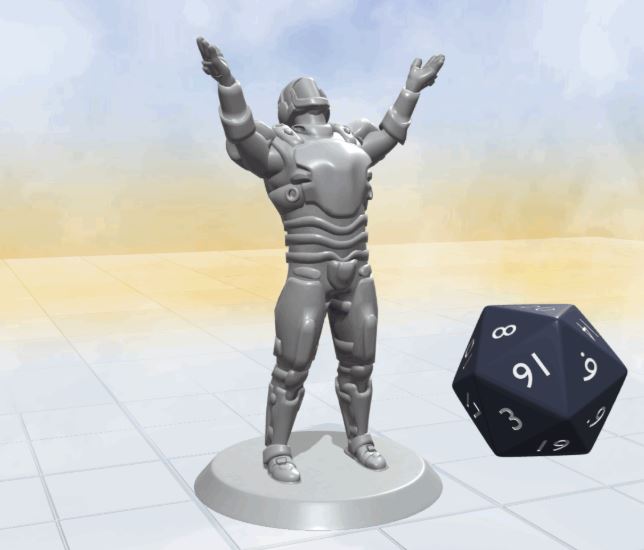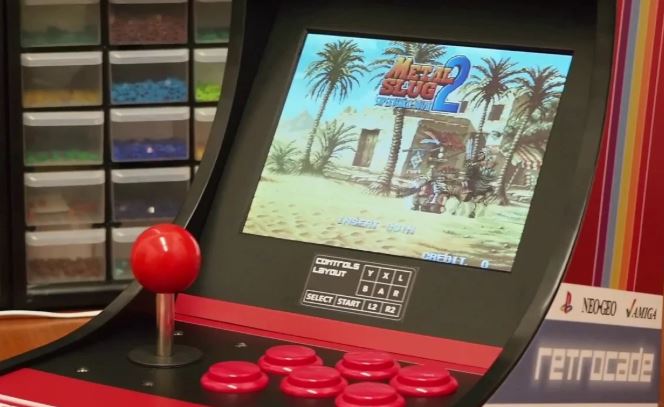From board games and tabletops to their high-tech electronic counterparts in consoles and PCs, games are a wide and varied genre of entertainment. They are also realms for self-expression, which is why dedicated players can spend so much money, not just on the essentials, but on adding their own unique personalities to their play with custom pieces, controllers, cases and just about anything else. Luckily, additive manufacturing is there to help on this front, making customized accessories and crucial pieces easier and cheaper to produce for both professionals and hobbyists.
3D printing figurines and toys has been one of the oldest uses of the technology. So naturally, it’s not that hard to imagine how additive manufacturing is being applied to board games and tabletop RPGs like DnD and Warhammer 40k. In fact, there are a number of companies that specialize in giving players in-depth digital options to customize their characters, game pieces and accessories.
Companies like Anvl Custom Miniatures boast an online tool that allows users to create miniatures with over 2 trillion possible combinations. The interface actually looks like a Sims character designer, offering a ton of creative possibilities. With the buttons and sliders players can really get into the weeds, tinkering with musculature, armor, headgear, posture etc. HeroForge is another company that specializes in a similar concept.
The options are even more expansive if you have a desktop 3D printer at home. The online board game community has your back with all sorts of free models and trinkets. Boardgamegeek.com has multiple threads discussing the various possibilities, benefits and joys of printing your own parts. That’s not even getting into the Youtube channels and walkthroughs that can tell you all you need to know about printing miniatures and figurines. Lost a crucial object like a rare extra-sided die? You can probably find a printable model online and have it back in 30 minutes. It’s convenient considering how prone to misplacement or breakage these tiny plastic bits can be.
So, while retrieving old pieces is great and all, what new things can 3D printing add? The DnD community might have the most compelling answer to that question. 3D model repositories like Thingiverse and MyMiniFactory are chock full of elements that aren’t in the actual pieces that come with a standard DnD package, but players have long been adding models for original landscaping, props, weapons and various accoutrements to enhance their playing experience. Enterprising users have also been developing entirely new creatures and monsters to add to the massive lexicon of already existing DnD options.
Unfortunately, in the case of certain games like Warhammer, creating your own pieces is illegal. But who needs to play in somebody else’s sandbox anyway? 3D printing can bring in that extra level of creativity to these classic games, but just as easily allows players to develop their own original physical game concepts.
3D printing retro-consoles and accessories is a pretty interesting way a lot of gamers are expressing their personal creativity. If you’re missing the old days of arcade sticks and massive buttons, you may be interested in how 3D printing is putting a new spin on that. Devoted arcade-fanatics like Christopher Tan have developed desktop arcade machine alternatives. Unlike the originals these can be smaller and printed at home from distinct pieces and some electronics. While old arcade cabinets can be clunky, these are quite portable and handy. You can do the same with a raspberry pi-powered gameboy design or a PS4 controller.
Some gamers have taken a different route, inventing simple yet effective physical solutions to controller issues. If you want your Wii Mariokart experience to feel closer to driving, you can get this add-on that turns the Wii stick into a steering wheel. You can even find add-ons to customize the buttons on your controllers for better grip if you fancy that.
On a more professional level, IKEA and UNYQ have been 3D printing gaming accessories like ergonomic keycaps and desk supports. They plan to expand the line to chairs, mouses and more. The accessories aren’t just for show either, as they provide comfort for extensive play. The companies also recognise that in the modern day gaming can be a proper career with twitch streaming and Youtube, so these can be just as much a professional investment as a hobby purchase.
3D printing gaming equipment can easily provide replacement pieces that break-down with all that button-mashing and roughhousing. This is why gamers are putting up designs for replaceable arcade stick buttons. Keep in mind, arcade sticks are very expensive but some fighting game aficionados can’t play without them. Being able to easily replace their buttons for comfort or in the case of breakdown is a godsend for the player and his wallet.
With gaming as one of the major mass-entertainment industries in the world, there will always be a place for additive manufacturing to add some extra flavor to the fun. Whether it’s providing more comfort or easier customization, gamers can always look to 3D printing.

 亞洲大學3D列印研究中心
亞洲大學3D列印研究中心




